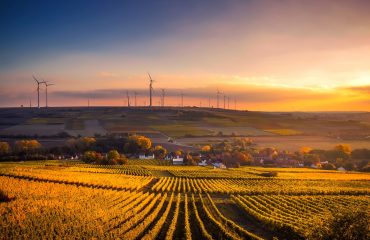The latest push in Illinois is to add solar energy to the grid to increase the state’s footprint of renewable energy. The state’s goal is to require 25% of retail electric sales be from renewable sources by 2025. What does this require from solar? How many farmland acres will be required?
Illinois’ total electricity production capacity is 65,000 mW. In 2019, 54% of that was produced by nuclear, 27% by coal, 10% by natural gas, and 8% by wind. Additional wind projects are under construction, which will add 23% more wind production for a total of 10% of all electricity produced. With a goal of 25% renewable, will all additional come from solar? If so, where will solar be installed?
The answer to these questions is quite complicated and unknown. Here are a few reasons why:
a. The 25% goal includes renewable energy credits as well as production. This means that the renewable energy could be produced outside the state as well as in-state, with the utility companies purchasing credits to meet their goal. Likewise, some IL produced renewable credits could be sold to other states rather than IL utilities.
b. The community solar farms and the residential/commercial rooftop installations can also be counted toward the 25% goal. How much of this will be installed?
c. More wind farms could be developed, both in IL and outside IL. Also, solar credits from other states could be purchased.
d. Illinois state funding is currently depleted. New major legislation is expected in 2021. Legislation will include funding needed to incentivize new renewable installations.
e. Solar and wind electricity production typically occurs at different times of the day. Solar obviously produces during daylight. Thus, it could be best for high demand hours during summer heat. Wind production is often highest at night with greater wind events. Hot, humid summer days are sometimes windless. Actual electricity production must meet demand when needed.
We are all aware of the first round of the “community solar” lottery. These were at a size of 2 mW each (12-15 acres). Seven community sites were approved in DeKalb County from 50 applications. Other nearby counties had similar experiences, with 30-75 applications and 4-8 accepted in the lottery. These will add 10-20 mW of solar in each county.
What is the status of the large, industrial-size projects? Lee County has been the most active to date. They have approved four large projects, covering nearly 11,000 acres with expected production of 1,425 mW. Grundy County is the only other county with approved projects. They have two projects, totaling 2,800 acres @ 350+ mW. DeKalb and other counties have not received applications to date, but do expect them. In DeKalb, for instance, we know of two projects being researched and negotiated. Those are expected to apply in early 2021.
It is anticipated that many other large-scale solar farms will be requested and approved across the state, including in our region. The incentive to landowners is quite large. Annual income proposed on solar farms is 2-3x of expected returns from farming. Thus, it is understandable that some landowners will agree to participate.
The obvious downside to solar vs. wind is that the entire property is taken out of ag production. It now becomes a commercial property for the foreseeable future and unknown capability to reclaim it as farmland after 30-50 years. Will solar farms be installed on high quality farmland? Or will the targeted areas be on the lower quality soils?
If the early activity is an indication of the future, it is possible to have 10,000+ acres per county converted to solar. This level of conversion would generate ‘excess’ income of $5-10MM. If it occurs in every county, will it have an effect on farmland values?
Unlike land sales for commercial/residential development that requires a Sec 1031 exchange, the excess income from solar will be annual ordinary income. Thus, it could be used for ordinary business expenses, debt reduction, equipment purchases or expansion of the land base. It will not require a purchase of additional real estate.
My personal opinion is this level of solar farm activity will have a limited effect on farmland values, especially at first. I believe the excess income will be (or should be?) utilized for all possible purposes. If it is a farming operation, it could be an excellent income to reduce debt, adapt new technologies, expand grain storage or otherwise improve the operation. If and when all other goals are met, land acquisition is an option.
Absentee owners may be more likely to target additional land purchases. However, ordinary income could be used for any business investments they may have outside of their farmland portfolio.
During the high development era of the early 2000’s, there was clear and evident influence on farmland values in various IL regions. This was due to the requirement of exchanging real estate for real estate. With the excess ordinary income for wind and solar, those funds can be used for a multitude of purposes. This may lead to a positive effect in several ag industries beyond just land.





